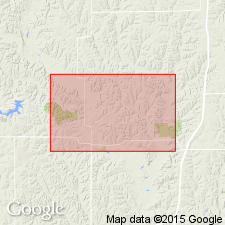
- Usage in publication:
-
- DeKalb limestone
- Modifications:
-
- Original reference
- Dominant lithology:
-
- Limestone
- AAPG geologic province:
-
- Iowa shelf
Summary:
Pg. 437-439. Dekalb limestone. Limestone, known as FUSULINA limestone, 15 to 30 feet thick, occurring in shale interval between Westerville limestone above and Winterset limestone below. Included in Bethany limestone. Age is Pennsylvanian.
Named from DeKalb, Decatur Co., IA.
Source: US geologic names lexicon (USGS Bull. 896, p. 590-591).
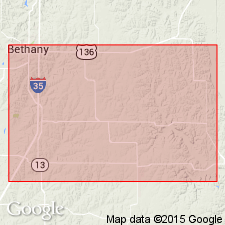
- Usage in publication:
-
- DeKalb limestone
- Modifications:
-
- Areal extent
- AAPG geologic province:
-
- Forest City basin
Summary:
Pg. 210. DeKalb limestone. Applied Chanute shale to the shale separating DeKalb limestone from underlying Westerville limestone, and Cherryvale shale to shale separating the DeKalb from the underlying Winterset limestone. Age is Pennsylvanian.
Source: US geologic names lexicon (USGS Bull. 896, p. 590-591).
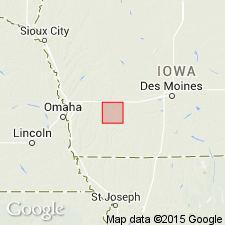
- Usage in publication:
-
- DeKalb limestone
- Modifications:
-
- Areal extent
- AAPG geologic province:
-
- Forest City basin
Summary:
Pg. 186; Iowa Geol. Survey Ann. Rpt, v. 29, 1924. DeKalb limestone. Correlated DeKalb limestone and Westerville limestone with Drum limestone, and called the shale overlying it Chanute shale and the shale underlying it Cherryvale shale. He also called the limestone overlying Chanute shale the Iola limestone, instead of Westerville. Age is Pennsylvanian.
Source: US geologic names lexicon (USGS Bull. 896, p. 590-591).
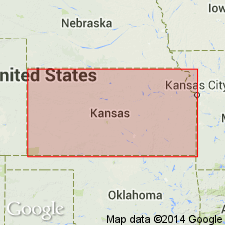
- Usage in publication:
-
- DeKalb limestone member
- Modifications:
-
- Not used
Summary:
Adhered to latter definition of Cherryvale shale (Moore, 1932, Kansas Geol. Soc. 6th Ann. Field Conf. Gdbk.), but discarded DeKalb limestone for Westerville limestone, a name introduced by Bain at the same time he introduced DeKalb in 1898 report.
Source: US geologic names lexicon (USGS Bull. 896, p. 590-591); GNC KS-NE Pennsylvanian Corr. Chart, sheet 2, Oct. 1936.
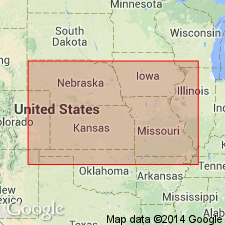
- Usage in publication:
-
- DeKalb limestone member
- Modifications:
-
- Revised
Summary:
Pg. 91. DeKalb limestone member of Cherryvale shale of Kansas City group. Cherryvale shale of Kansas divided into following members (descending): Quivira shale, DeKalb limestone (erroneously called Drum limestone by Hinds and Greene), Wea shale, Block limestone, and Fontana shale. Age is Late Pennsylvanian (Missouri age).
Source: US geologic names lexicon (USGS Bull. 896, p. 590-591); GNC KS-NE Pennsylvanian Corr. Chart, sheet 2, Oct. 1936.
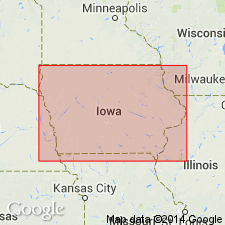
- Usage in publication:
-
- "DeKalb limestone"
- Modifications:
-
- Not used
Summary:
Pg. 29. "Dekalb limestone" of Iowa Geol. Survey, defined by Bain, is synonym of Winterset [an older limestone than Westerville], and should be discontinued because latter has priority. The Westerville limestone defined by Bain, is "Drum limestone" of Kansas City section.
Source: US geologic names lexicon (USGS Bull. 896, p. 590-591).
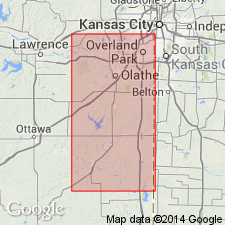
- Usage in publication:
-
- DeKalb limestone†
- Modifications:
-
- Abandoned
- AAPG geologic province:
-
- Iowa shelf
Summary:
Pg. 40. †DeKalb limestone. In Oct. 1932, R.C. Moore, G.E. Condra, and F.C. Greene traced so-called Drum limestone of Kansas City area to Winterset, Iowa, and determined that type DeKalb is Winterset limestone. As Winterset has priority, the term DeKalb must be dropped.
Source: US geologic names lexicon (USGS Bull. 896, p. 590-591); GNC KS-NE Pennsylvanian Corr. Chart, sheet 2, Oct. 1936.
For more information, please contact Nancy Stamm, Geologic Names Committee Secretary.
Asterisk (*) indicates published by U.S. Geological Survey authors.
"No current usage" (†) implies that a name has been abandoned or has fallen into disuse. Former usage and, if known, replacement name given in parentheses ( ).
Slash (/) indicates name conflicts with nomenclatural guidelines (CSN, 1933; ACSN, 1961, 1970; NACSN, 1983, 2005, 2021). May be explained within brackets ([ ]).

